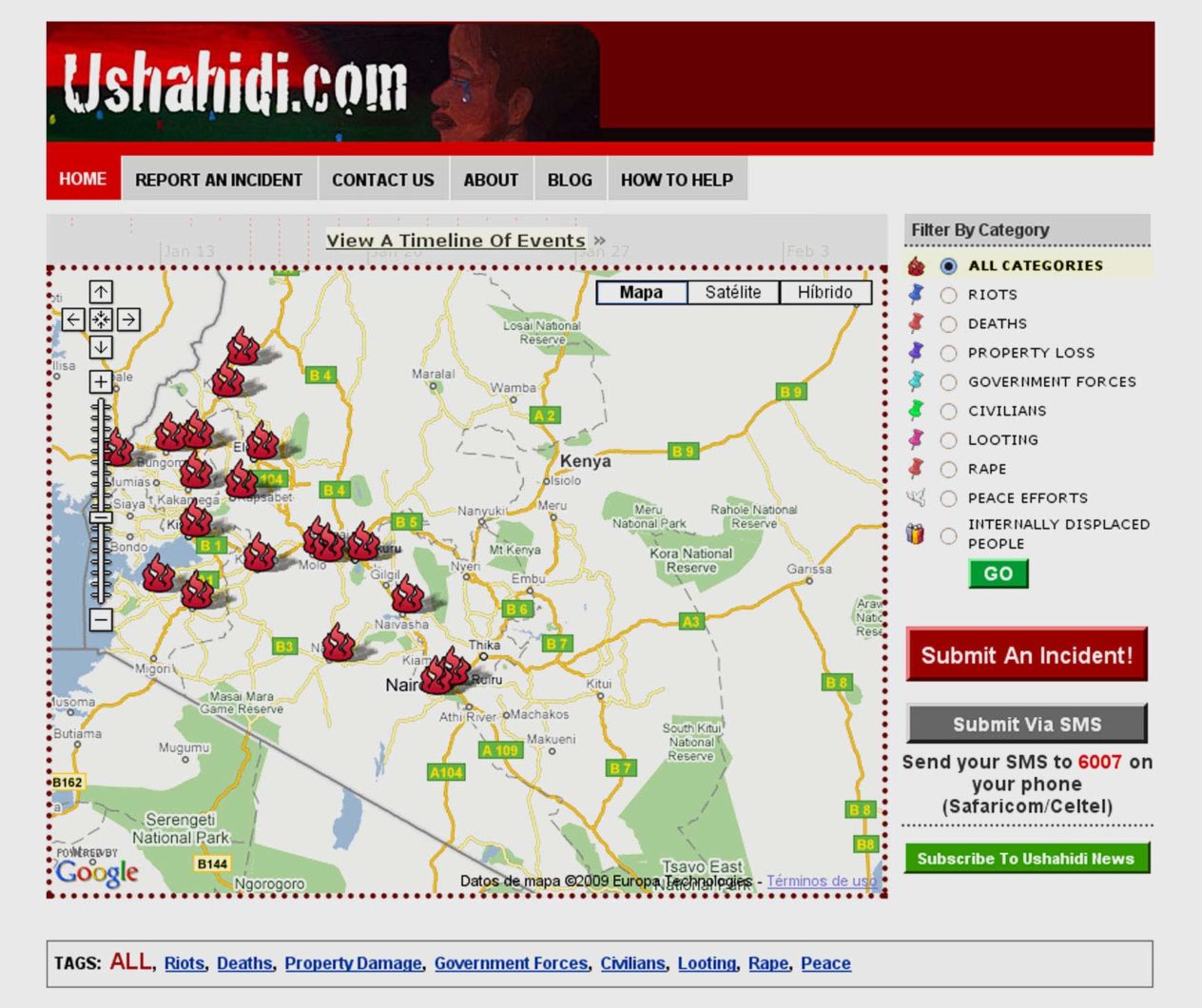Ushahidi
Web-based tool designed to visualize and map information in real-time for emergency response, social activism and public accountability.


Initiator(s)
Juliana Rotich, David Kobia, Erik Hersman and Ory Okolloh
Description
Ushahidi is an open-source web-based tool for collecting, visualising and mapping information using multiple channels, including SMS, email, Twitter and the web. It is designed as a platform to gather news and reports of the people on the ground and connect them with organisations and institutions willing to organise and quickly respond to any emergency. It has been used for election monitoring, crisis response, advocacy, and Human Rights Watch, among other functionalities. The original Ushahidi website has evolved into a free, open-source software platform that streamlines information collection.
Context
After the post-election fallout in Kenya (Dec.2007), the country broke out in riots and violence. It was hard to understand what was happening on the ground and how to stay safe. Within days, four technologists build a web-based platform to crowdsource first-hand reports from citizens via SMS and the web. These reports were then geolocated and time-stamped; triggering service was also more effective, alerts back to the people on the ground and citizens watching from around the world. They submitted, verified, and triaged over 40,000 reports. Currently, Ushahidi has grown into a social enterprise with a global team of 30+ highly skilled and diverse experts from 10 different countries, building on their open-source roots.
How to use it
Anyone can download the app and use it to report/map a situation. If you would like to use other tools as a web platform, contact Ushahidi to get the information.
Goals
They initially developed Ushahidi, which means “testimony” or “witness” in Swahili, as a tool to denounce, trace and give visibility to any emergency, violence, injustice or environmental assault. It is currently oriented to democratising information, increasing transparency, and lowering individuals' barriers to sharing their stories worldwide.
Beneficial outcomes
The Ushahidi Platform has been used over 150,000 times in over 160 countries, crowdsourcing over 50 million reports worldwide from citizens, activists and news organisations not only in Kenya but also to monitor violence in Congo and Gaza, to monitor Indian elections, to connect volunteers with people in danger during Russian wildfires or Crowdsourced crisis mapping during the Haitian earthquake in 2010. Artist collective Hysteria in Semarang (Indonesia) used Ushahidi to improve citizen participation in government.
In 2020 as a response to the COVID-19, Ushahidi toolkit was used by multiple crowdsource platforms to share information and mapping resources, connecting volunteers, institutions, and those in need in various countries like "Ampas" in Italy, or "Frena la Curva" in Spain, Ecuador, Argentina, Colombia, etc.
Moreover, Ushahidi has inspired other innovators like The Nairobi Innovation Hub, or iHub (a spinoff of Ushahidi) that has developed new tech ideas in Africa by providing entrepreneurs, designers, programmers and researchers with community lab space. It has incubated over 150 startups.
Location
Online, Kenia
Field
Ecological activism, Human Rights, Open Access, Networks
Strategy
Deactivate (art’s aesthetic function), Hacking, Cognitive surplus, Narratorship (talking art), Externalities (positive and negative)
Users
David Kobia, Juliana Rotich, Erik Hersman, Brian Herbert, Ushahidi team and 45.000 users just in Kenya, communities affected by a disaster or emergency situation.
Maintained by
Smallworldnews, Rob Baker, KOMPAGROUP, Donations
Duration
2008 - ongoing
Coefficient of Arte Util
68
Category
Scientific
Pedagogical
Politics
Urban Development
Economy
Environment
Social
Links






